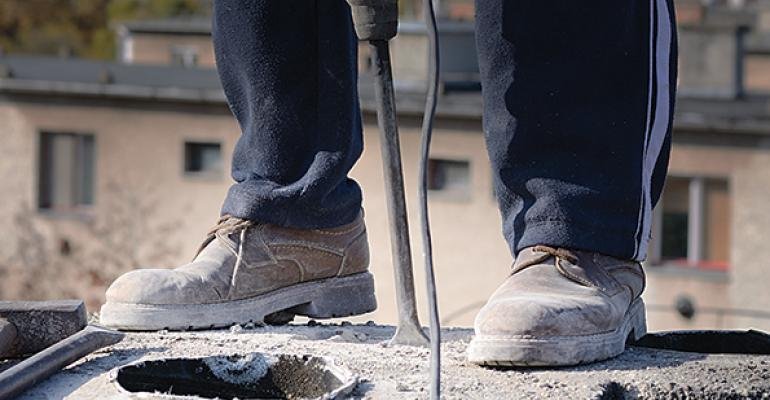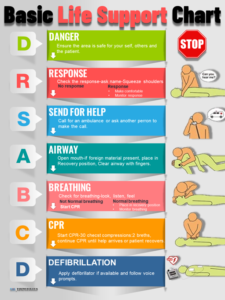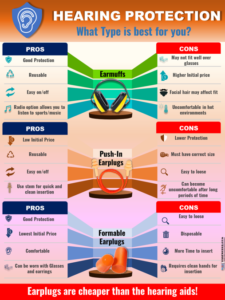Employees’ Foot Safety and Hazards
5 min readSafety leaders need to actively promote foot safety in the workplace to ensure worker safety and productivity.Many jobs require employees to constantly lift, move and work with heavy objects, all while standing for long periods of time. When all of these factors are coupled, it can result in potentially fatal injuries that start with the feet and work their way up the body, affecting knees, hips and backs. Foot injuries can cause enormous backlash for both the employee and employer. For example, with employees, an injury resulting in permanent or long-term foot damage can hinder their ability to work, while employers can be left paying immense amount of workers compensation.

According to the Bureau of Labor Statistics, there are more than 53,000 foot injuries per year leading to missed work days. This means that on average, 4.8 individuals per 10,000 full-time workers are missing work due to foot injuries. There are several factors that can cause foot-related injuries, which impede employee productivity, safety and health and wellness.
SLIPS, TRIPS AND FALLS
According to the National Safety Council, slips, trips and falls in the United States alone resulted in 44.5 million injuries, costing companies $967.9 billion dollars. These statistics remind us that employers must be able to identify the factors that cause these injuries, as well as how to combat and prevent them.
Tripping over Pre-Installed Anti-Fatigue Mats: A very common cause of trips is workers stumbling over anti-fatigue floor mats. Many employers provide these mats as a source of comfort for their workers that have to stand for long periods of time. While the gesture is ergonomically thoughtful, the bulky build of the mats often causes employees to trip while moving throughout the workspace. A quick and easy solution for this is to replace the mats with personal anti-fatigue insoles. Not only do insoles provide 360-degree support with dual layer memory foam and increased comfort, but they are much more practical. Anti-fatigue matting can be expensive to install, maintain, clean and replace, especially when you have a large workspace.
Pain in Feet: Harvard researchers have been able to link foot pain to a slow gait and poor balance, making it very easy to fall when experiencing this kind of pain. Providing insoles in this instance can help combat excruciating pain to help avoid fall-related injuries. Insoles are not only comforting to the heel and sole of your foot, but they also help to redistribute weight and relieve pressure. Certain insoles can even help correct the way one walks (supination vs. pronation), which can ultimately help relieve pain as well.
Lack of Traction: Some people may not know the importance of a good work boot and could be coming into work with improper shoes. Many slips are caused by a lack of traction between one’s shoe and the floor. A great way to combat this is providing employees with a list of recommended work boots that have proven, advanced traction.
Poor Flooring: Floors that are constantly wet or greasy, have loose floorboards, are uneven, or have immense amount of clutter are a huge hazard. In order to avoid injuries, hiring a cleaning crew or tacking on “floor cleaning” to an existing position can easily help alleviate these problems. Managers or supervisors should also conduct periodic inspections to ensure their floors are up to standards.
SENSE OF INVINCIBILITY
Many individuals think that workplace injuries may never happen to them, which is why foot safety attire is often overlooked. These are the individuals that also often forgo wearing their foot safety attire because they never think twice about getting injured and think it couldn’t happen to them. For those that tend to avoid wearing the recommended work boots, steel-toe overshoes, puncture resistant insoles, or rubber boots when needed, there are a few tactics to ensure everyone complies with foot safety regulations.
Implement an Insoles Program
Offering a program that provides insoles to workers would draw a lot of attention from those that never previously thought to use them. If they are given as a complimentary tool, most employees would likely take you up on the offer. Having these individuals come to work wearing insoles can reduce foot pain and help to avoid associated injuries. It is important, however, that employers replenish the insoles every few months to ensure they are still providing the necessary comfort and protection. Initiating this program helps to ensure workers are utilizing the insoles to increase personal comfort, which ultimately boosts productivity and lowers absenteeism and healthcare costs.
Safety Training
Many times, employees will not think of the safety hazards they are exposed to on a daily basis. They often forget because they are not reminded about the dangers around them and how to avoid them. By initiating a mandatory safety training session several times each year, employees can have reminders of what they can do to help themselves avoid dangerous situations. To keep this top of mind, install a “Safety Wall” which lists all the do’s and don’ts discussed at each meeting.
HUMAN FACTORS
When it comes to meeting a deadline, employees can often feel rushed, frustrated and tired. These are all states-of-mind that can directly affect workers productivity and safety. While these are human factors and are harder to control, there are a few tactics a company can use to help reduce these feelings.
Breaks: Fatigue is often thought of as lack of sleep; however, one can easily become fatigued just by standing for a long period of time. In order to avoid this, set up a break system which allows employees to take up to two 10-minute breaks a day to sit down, rest their feet and hydrate. While the initial thought of giving 20 minutes to your employees may seem wasteful, this will increase productivity in the long-run.
Constant Reminders: Oftentimes, employees rush through tasks when they have deadlines. When rushing occurs, injuries tend to follow. Remind your workers weekly that safety and accuracy are most important—rushing is never the answer.
Create a Relaxing Environment: Frustration is a direct correlation of stress, which often comes from the workplace environment. In order to reduce frustration, and ultimately reduce associated injuries, it is important to create and maintain a relaxing environment for everyone. To do this, offer incentives that show employees they work at a company that cares about their well-being. Incentives could include adding a wellness program through the HR department or an extra paid vacation day when the wellness goal is met.
Foot injuries are more common among the workforce than we might think; therefore, it is crucial to provide workers sufficient foot protection to ensure everyone is practicing safety on a daily basis. It is on managers and supervisors to actively promote foot safety through efforts such as insole programs, mandatory safety training, required breaks, and making sure workers are always in the required PPE when performing dangerous on-site duties.



